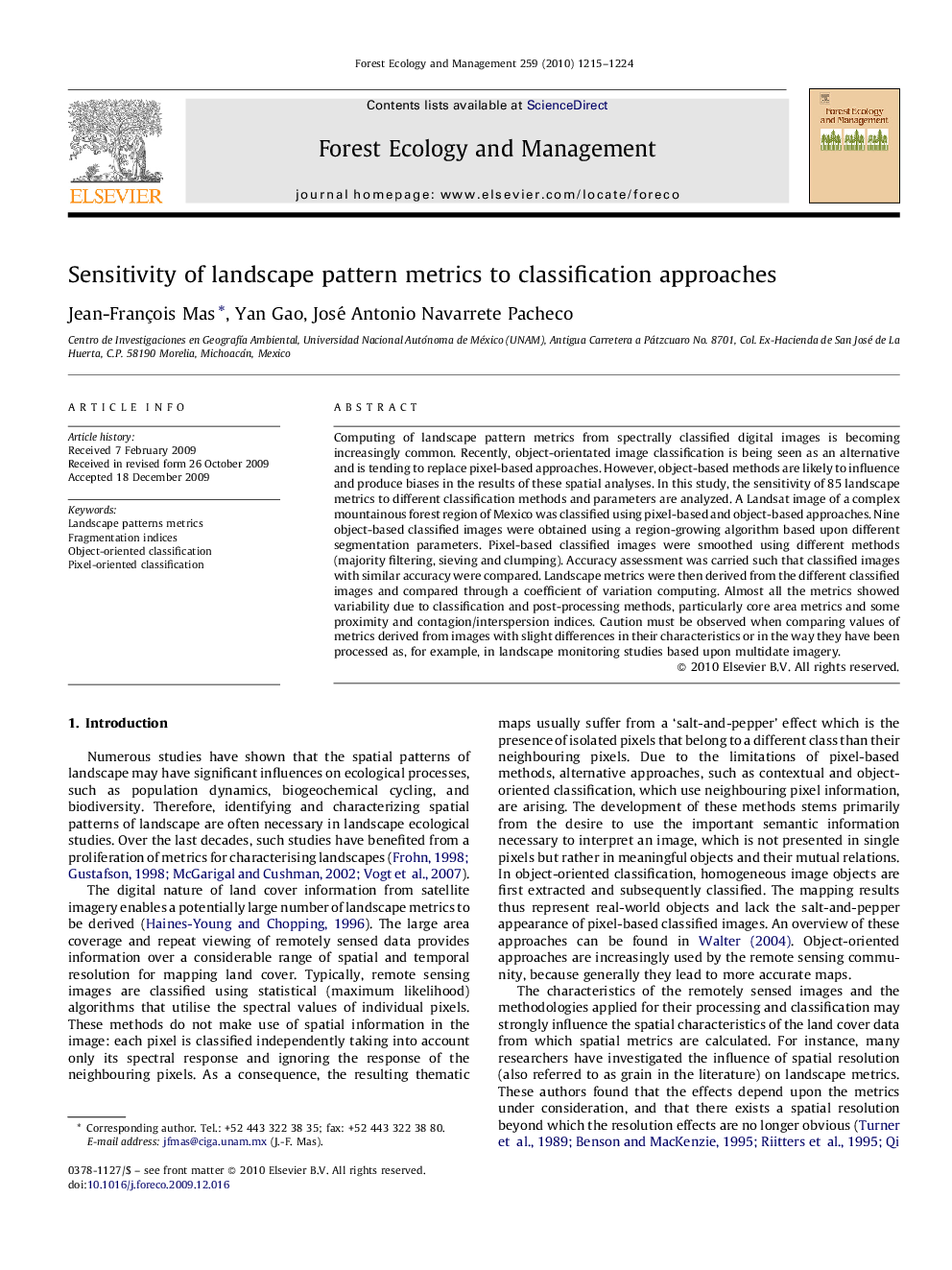| Article ID | Journal | Published Year | Pages | File Type |
|---|---|---|---|---|
| 88612 | Forest Ecology and Management | 2010 | 10 Pages |
Computing of landscape pattern metrics from spectrally classified digital images is becoming increasingly common. Recently, object-orientated image classification is being seen as an alternative and is tending to replace pixel-based approaches. However, object-based methods are likely to influence and produce biases in the results of these spatial analyses. In this study, the sensitivity of 85 landscape metrics to different classification methods and parameters are analyzed. A Landsat image of a complex mountainous forest region of Mexico was classified using pixel-based and object-based approaches. Nine object-based classified images were obtained using a region-growing algorithm based upon different segmentation parameters. Pixel-based classified images were smoothed using different methods (majority filtering, sieving and clumping). Accuracy assessment was carried such that classified images with similar accuracy were compared. Landscape metrics were then derived from the different classified images and compared through a coefficient of variation computing. Almost all the metrics showed variability due to classification and post-processing methods, particularly core area metrics and some proximity and contagion/interspersion indices. Caution must be observed when comparing values of metrics derived from images with slight differences in their characteristics or in the way they have been processed as, for example, in landscape monitoring studies based upon multidate imagery.
